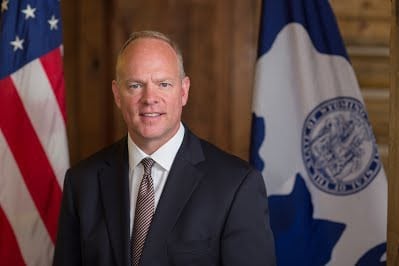
Wyoming Gov. Matt Mead’s administration is exploring any “legal avenues” that exist to challenge the Obama administration moratorium on coal leasing on federal lands. “We started looking at [a formal] challenge the day that we learned this was going to take place to see whether or not there’s a legal avenue there,” Mead (R) said Friday at an event in Washington, D.C., hosted by Politico.
The Interior Department announced in late January it would issue no new coal leases on public lands while completing a programmatic environmental impact statement (PEIS) of the federal coal leasing program. The review will be conducted “in order to ensure that it is properly structured to provide a fair return to taxpayers and reflect its impacts on the environment, while continuing to help meet our energy needs,” according to the Interior Department announcement. The agency last conducted a PEIS for the federal coal program in 1983-1984. That review process also included a pause on coal leasing.
“It hurts certainly on research and development [for] improving coal when you say there’s not going to be new coal leases. It hurts in our ability to export coal and have coal ports when you say there’s not going to be any new coal leases,” Mead said.
The moratorium will apply only to new leases and will not affect leases already in place, according to the Interior Department. Currently, coal production on federal lands accounts for roughly 40 percent of all U.S. coal output. Wyoming produces more coal than any other state in the nation.
A better way to address the high-carbon emissions of coal is to find a way to use them, Mead said. The governor is a longtime supporter of carbon utilization efforts, pushing for several years for the development of an integrated test center to research novel uses for CO2. Mead secured $15 million in state funds through legislative approval in mid-2014 for the center, which is currently moving forward at the Basin Electric Power Cooperative’s Dry Fork Station near Gillette, Wyo.
A construction date for the ITC has not been set, but the center has already secured its first research teams who are due to begin work in March 2019.
“If you want to really reduce emissions, just the capture and sequestration isn’t going to get you where you want to go. You need to capture it, you have to have the ability to sequester it, and then you have to have the ability to use it. That’s really I think where the sweet spot is,” Mead said.